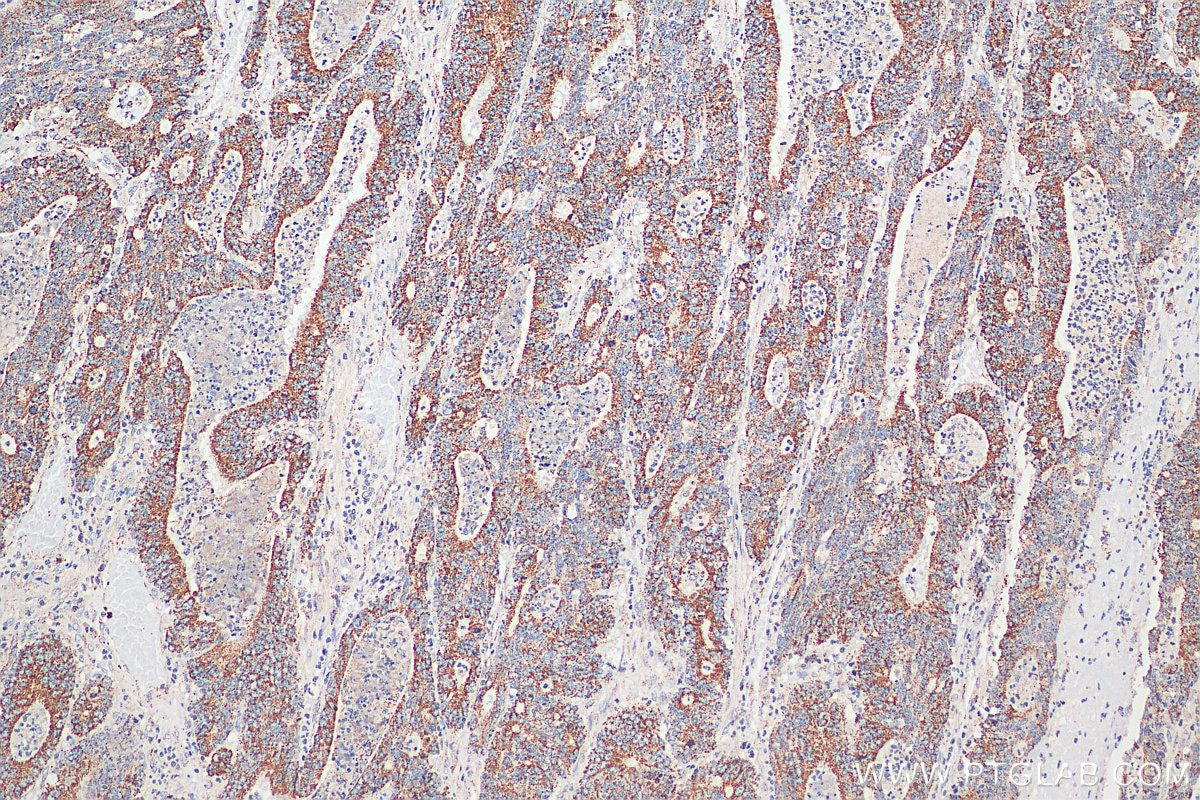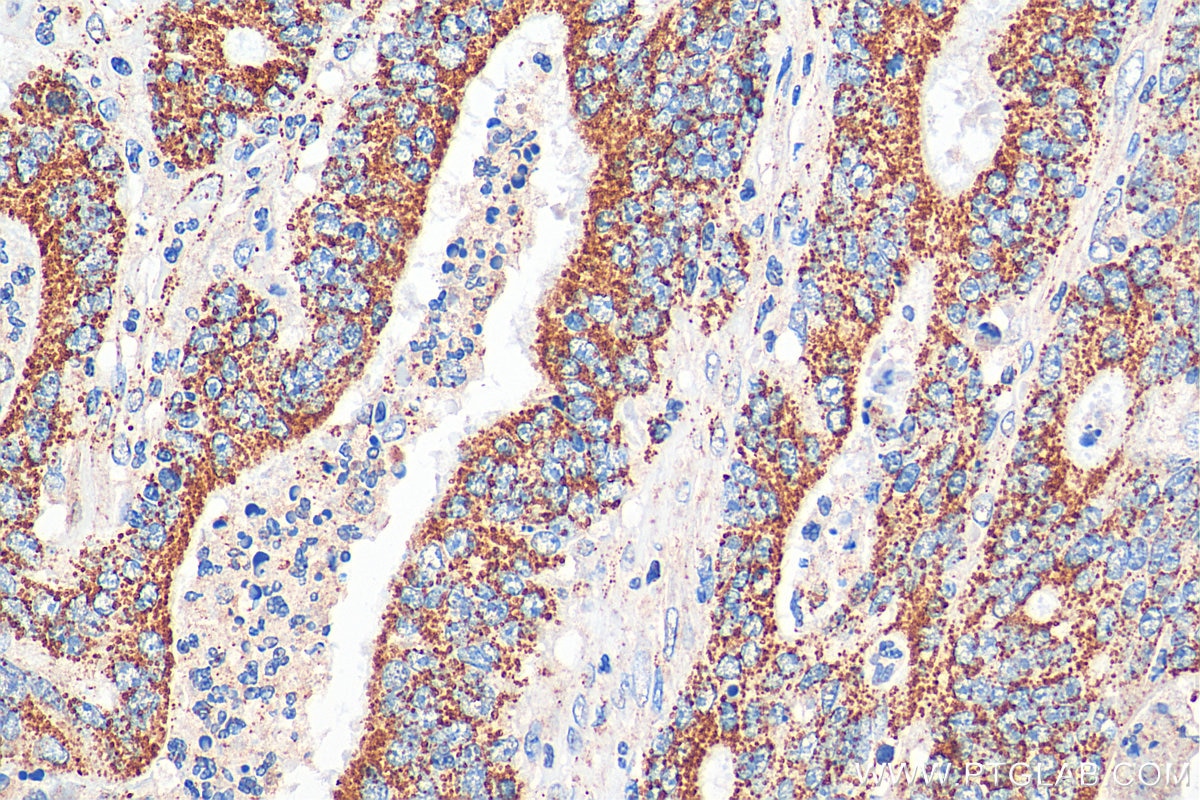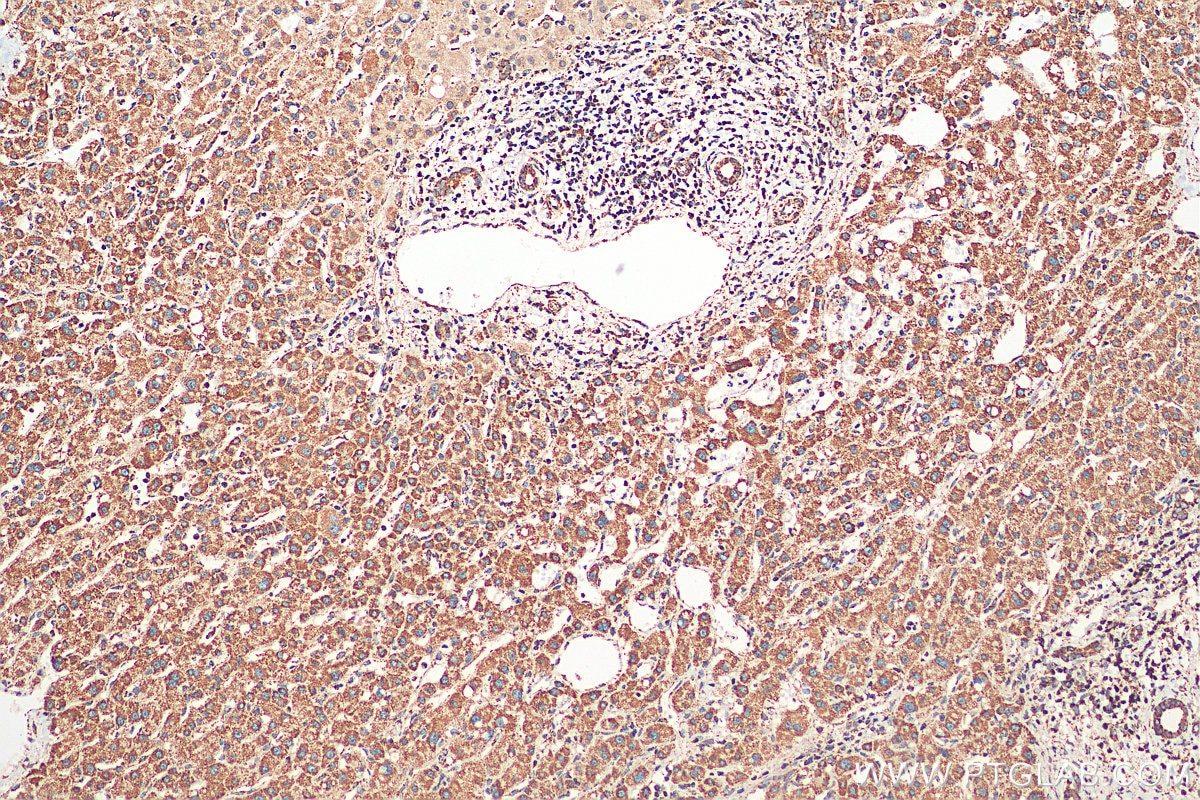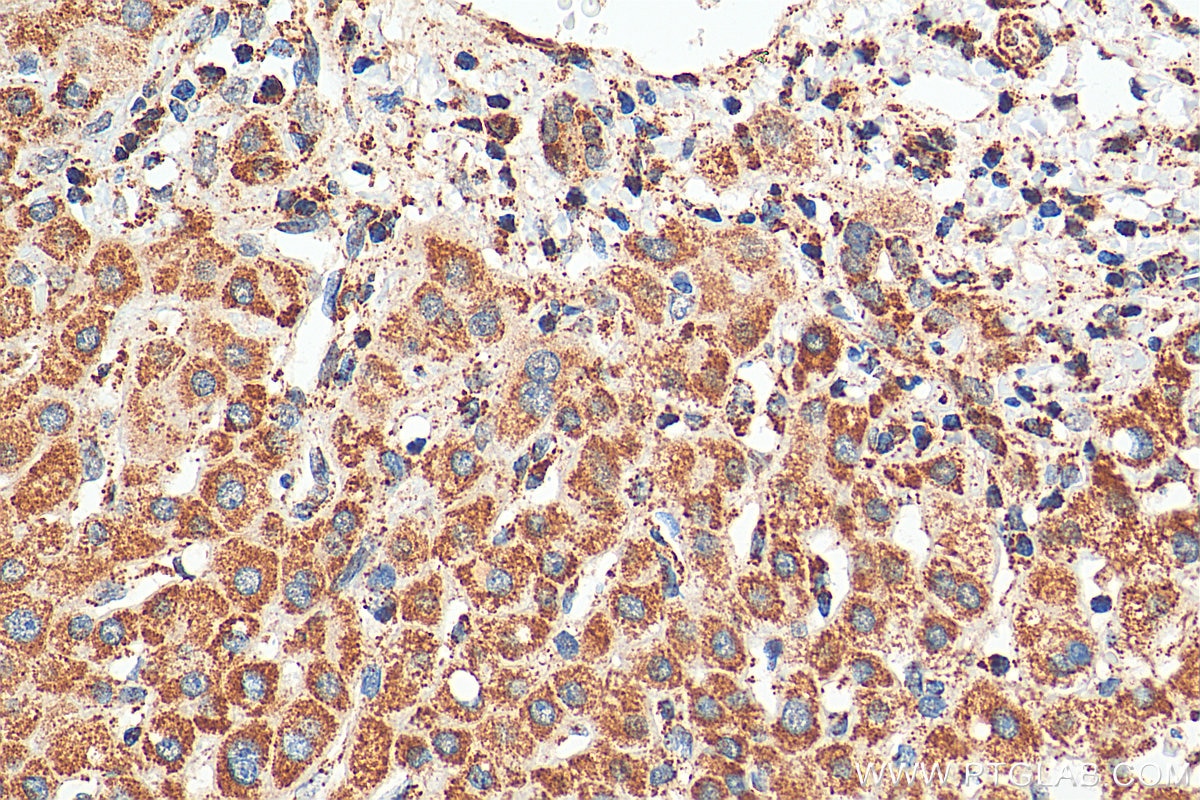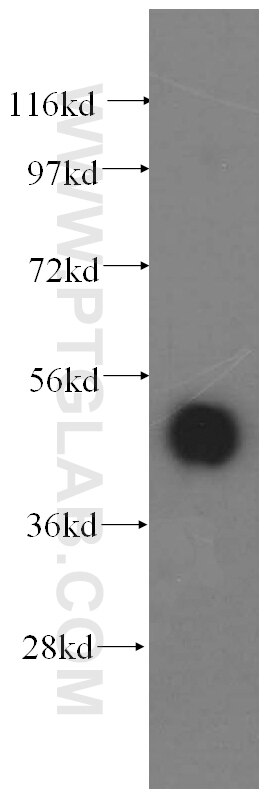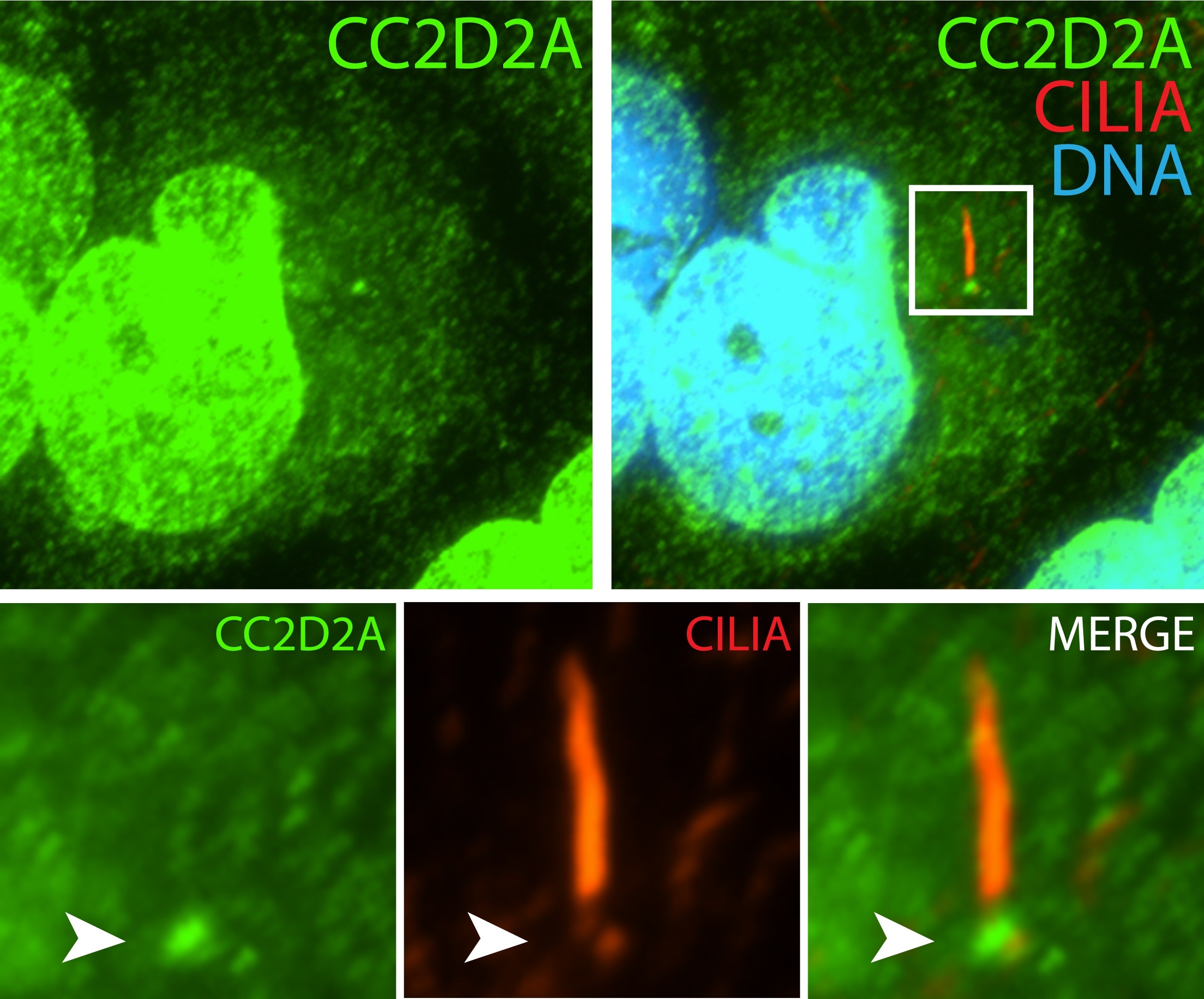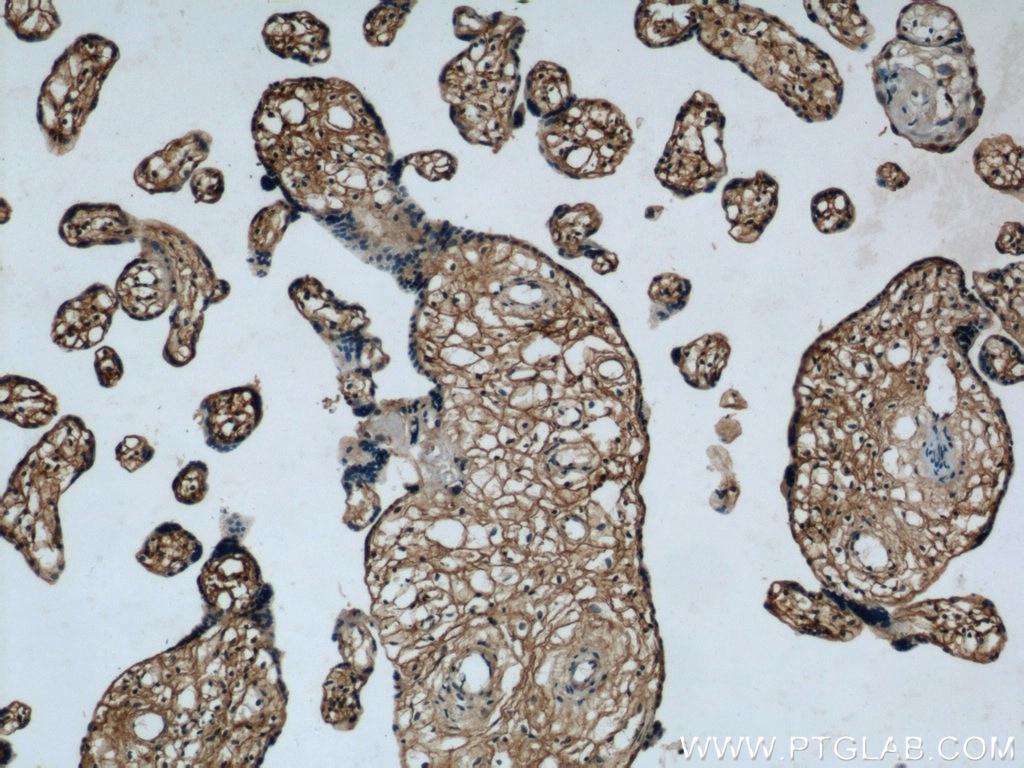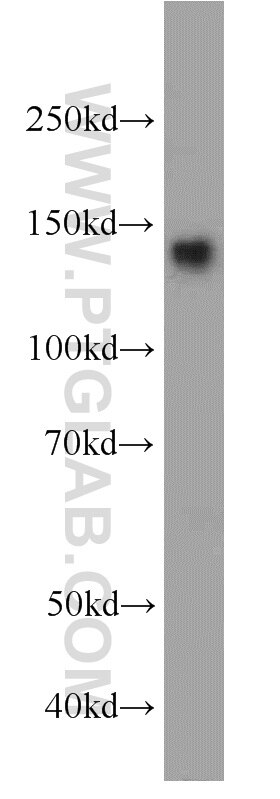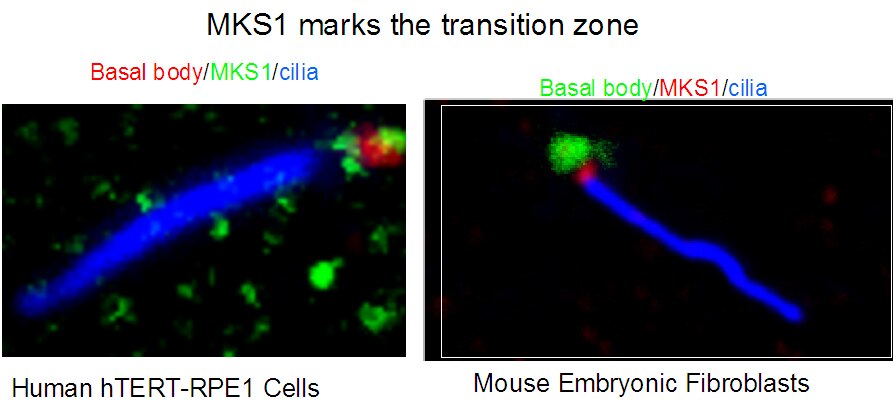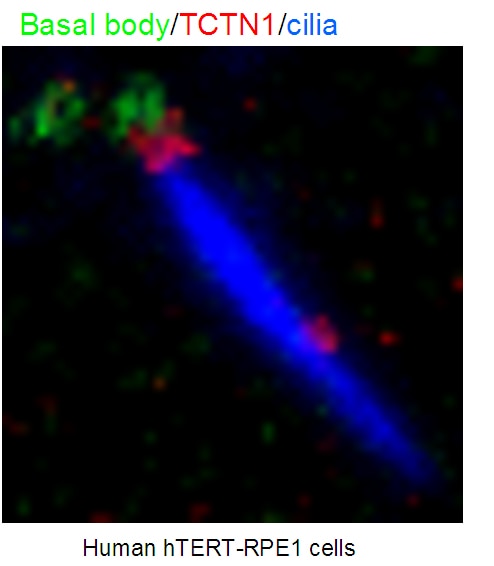- Featured Product
- KD/KO Validated
TCTN2 Polyklonaler Antikörper
TCTN2 Polyklonal Antikörper für IHC, ELISA
Wirt / Isotyp
Kaninchen / IgG
Getestete Reaktivität
human, Maus, Ratte
Anwendung
WB, IHC, IF, ELISA
Konjugation
Unkonjugiert
Kat-Nr. : 17053-1-AP
Synonyme
Galerie der Validierungsdaten
Geprüfte Anwendungen
| Erfolgreiche Detektion in IHC | humanes Kolonkarzinomgewebe, humanes Leberkarzinomgewebe Hinweis: Antigendemaskierung mit TE-Puffer pH 9,0 empfohlen. (*) Wahlweise kann die Antigendemaskierung auch mit Citratpuffer pH 6,0 erfolgen. |
Empfohlene Verdünnung
| Anwendung | Verdünnung |
|---|---|
| Immunhistochemie (IHC) | IHC : 1:50-1:500 |
| It is recommended that this reagent should be titrated in each testing system to obtain optimal results. | |
| Sample-dependent, check data in validation data gallery | |
Veröffentlichte Anwendungen
| WB | See 3 publications below |
| IF | See 5 publications below |
Produktinformation
17053-1-AP bindet in WB, IHC, IF, ELISA TCTN2 und zeigt Reaktivität mit human, Maus, Ratten
| Getestete Reaktivität | human, Maus, Ratte |
| In Publikationen genannte Reaktivität | human, Maus |
| Wirt / Isotyp | Kaninchen / IgG |
| Klonalität | Polyklonal |
| Typ | Antikörper |
| Immunogen | TCTN2 fusion protein Ag10725 |
| Vollständiger Name | tectonic family member 2 |
| Berechnetes Molekulargewicht | 697 aa, 77 kDa |
| GenBank-Zugangsnummer | BC009112 |
| Gene symbol | TCTN2 |
| Gene ID (NCBI) | 79867 |
| Konjugation | Unkonjugiert |
| Form | Liquid |
| Reinigungsmethode | Antigen-Affinitätsreinigung |
| Lagerungspuffer | PBS mit 0.02% Natriumazid und 50% Glycerin pH 7.3. |
| Lagerungsbedingungen | Bei -20°C lagern. Nach dem Versand ein Jahr lang stabil Aliquotieren ist bei -20oC Lagerung nicht notwendig. 20ul Größen enthalten 0,1% BSA. |
Hintergrundinformationen
TCTN2 (tectonic-2 or TECT2) is a type I membrane protein that belongs to the tectonic family, which consists of TCTN1, TCTN2 and TCTN3. Studies in mice suggest that tectonic may be involved in Hedgehog (Hh) signaling, and essential for ciliogenesis. Tectonic is component of the tectonic-like complex, a complex localized at the transition zone of primary cilia and acting as a barrier that prevents diffusion of transmembrane proteins between the cilia and plasma membranes. It exists two spilcing isoforms. The first aberrant transcript introduces 104 base pair from intron 13 and would delete 196 original amino acid, introduce two novel amino acids, and prematurely truncate the 697aa protein at residue number 504. The second transcript lacks exon 14 and would delete 195 original amino acids, introduce four novel amino acids, and prematurely truncate the 697 aa protein at residue number 507. The molecular weight of two isoforms are about 50kDa. We detected the 50kDa and 90kDa protein by immunoprecipitaion, but 50kDa protein may be the splicing isoform or non-specific band.
Protokolle
| Produktspezifische Protokolle | |
|---|---|
| IHC protocol for TCTN2 antibody 17053-1-AP | Protokoll herunterladen |
| Standard-Protokolle | |
|---|---|
| Klicken Sie hier, um unsere Standardprotokolle anzuzeigen |
Publikationen
| Species | Application | Title |
|---|---|---|
Nat Genet A transition zone complex regulates mammalian ciliogenesis and ciliary membrane composition. | ||
Cell Mapping the NPHP-JBTS-MKS protein network reveals ciliopathy disease genes and pathways. | ||
Nat Cell Biol CEP162 is an axoneme-recognition protein promoting ciliary transition zone assembly at the cilia base. | ||
Nat Commun Microtubule asters anchored by FSD1 control axoneme assembly and ciliogenesis. | ||
Rezensionen
The reviews below have been submitted by verified Proteintech customers who received an incentive forproviding their feedback.
FH Jay (Verified Customer) (12-02-2019) | Methanol Fixation.Immunostaining result shows that Tctn2 localizes to centriole in ciliated NIH3T3 cell (Tctn2;red, Arl13b;green for primary cilia, DAPI;blue for nucleus).The antibody seems to have noisy background in cytoplasm.
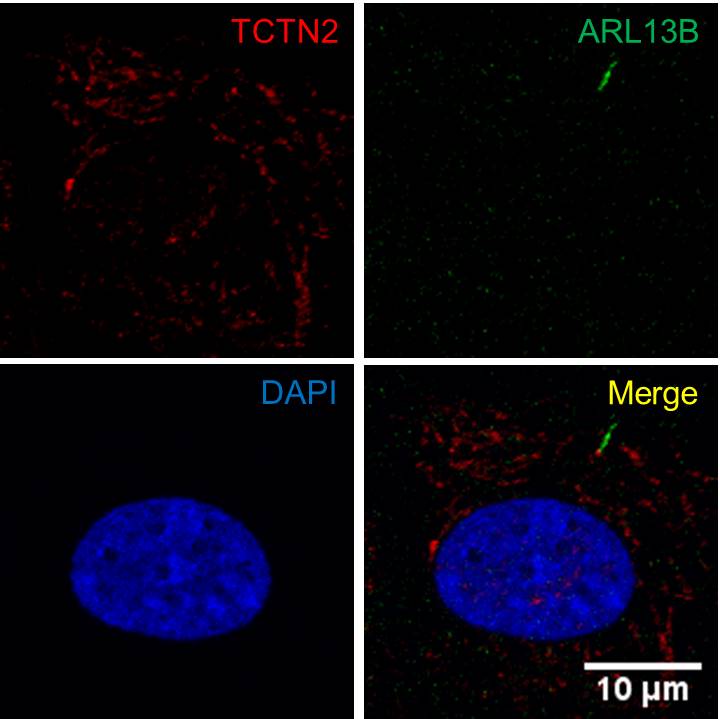 |
